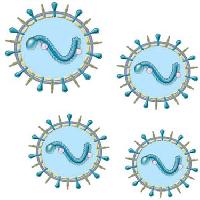 Samantha Palmer
Samantha Palmer Samantha Palmer
Samantha Palmer
Department Seminar Series
"Human parainfluenza virus glycoprotein interaction and host interplay in the natural tissue"
Thursday, February 16
4:00 p.m.
Center for Natural Science 112
View the announcement here. (PDF)
Everyone is welcome to attend!
Refreshments will be served beforehand (3:45-4:00 p.m.) in the CNS first floor lobby. Please bring your own reusable mug for beverages. Reduce, reuse, recycle!
Abstract:
Paramyxoviruses, a family of RNA enveloped viruses that include human parainfluenza viruses (HPIVs), cause the majority of childhood cases of croup, bronchiolitis and pneumonia worldwide. There are no vaccines or drugs to effectively stop or treat these infections, which involve cell fusion after host receptor cell binding. The fusion process is orchestrated by the interaction of two viral surface glycoproteins, the hemagglutinin-neuraminidase (HN) and the fusion protein (F). The lab has previously shown that viruses carrying a highly fusogenic HN-F machinery in monolayer cell culture have impaired growth in human airway epithelia cultures (HAE) and in vivo. Here it is shown that parainfluenza’s adaptation to successful growth in the lung is determined by specific interactions between HN and F which are different from the characteristics needed in monolayer cells. Infectivity and growth of wild-type HPIV3 was compared with that of a highly fusogenic HPIV3 variant that bears a mutated HN (H552Q) in HAE over 12 days. After 5-7 days post HAE infection with HPIV3 HN H552Q, a step-wise evolution of the virus was observed where a mutation in the fusion protein was initially required to overcome the growth defect of high F-activation efficiency provided by HN H552Q. This mutation required a complementary second mutation in HN’s second binding site to achieve a stable virus. These data suggest that the balance of the individual characteristics of the viral glycoproteins HN and F, as well as their ability to communicate and function as a single fusion complex, determines viability in a host - whether in monolayer cell culture or a more complex environment such as the lung. Having understood these key characteristics, anti-virals were then designed which effectively target the viral fusion machinery and are shown to inhibit spread of the virus in cotton rats.
https://www.ithaca.edu/intercom/article.php/20120209155317539